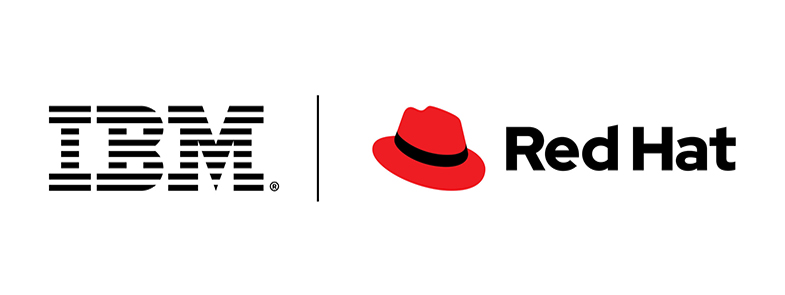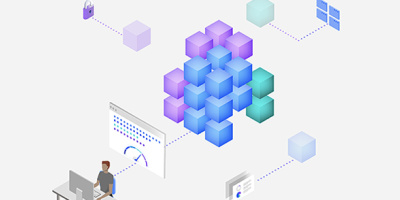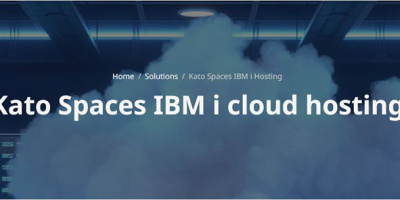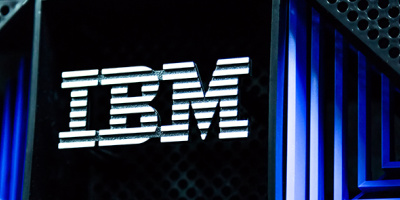- Acquisition positions IBM as the leading hybrid cloud provider and accelerates IBM's high-value business model, extending Red Hat's open source innovation to a broader range of clients
- IBM preserves Red Hat's independence and neutrality; Red Hat will strengthen its existing partnerships to give customers freedom, choice and flexibility
- Red Hat's unwavering commitment to open source remains unchanged
- Together, IBM and Red Hat will deliver next-generation hybrid multicloud platform
IBM and Red Hat announced today that they have closed the transaction under which IBM acquired all of the issued and outstanding common shares of Red Hat for $190.00 per share in cash, representing a total equity value of approximately $34 billion.
The acquisition redefines the cloud market for business. Red Hat's open hybrid cloud technologies are now paired with the unmatched scale and depth of IBM's innovation and industry expertise, and sales leadership in more than 175 countries. Together, IBM and Red Hat will accelerate innovation by offering a next-generation hybrid multicloud platform. Based on open source technologies, such as Linux and Kubernetes, the platform will allow businesses to securely deploy, run and manage data and applications on-premises and on private and multiple public clouds.
"Businesses are starting the next chapter of their digital reinventions, modernizing infrastructure and moving mission-critical workloads across private clouds and multiple clouds from multiple vendors," said Ginni Rometty, IBM chairman, president and CEO. "They need open, flexible technology to manage these hybrid multicloud environments. And they need partners they can trust to manage and secure these systems. IBM and Red Hat are uniquely suited to meet these needs. As the leading hybrid cloud provider, we will help clients forge the technology foundations of their business for decades to come."
"When we talk to customers, their challenges are clear: They need to move faster and differentiate through technology. They want to build more collaborative cultures, and they need solutions that give them the flexibility to build and deploy any app or workload, anywhere," said Jim Whitehurst, president and CEO, Red Hat. "We think open source has become the de facto standard in technology because it enables these solutions. Joining forces with IBM gives Red Hat the opportunity to bring more open source innovation to an even broader range of organizations and will enable us to scale to meet the need for hybrid cloud solutions that deliver true choice and agility."
Red Hat will continue to be led by Jim Whitehurst and its current management team. Whitehurst is joining IBM's senior management team, reporting to Ginni Rometty. IBM will maintain Red Hat's headquarters in Raleigh, North Carolina, its facilities, brands and practices. Red Hat will operate as a distinct unit within IBM and will be reported as part of IBM's Cloud and Cognitive Software segment.
Both companies have already built leading enterprise cloud businesses with consistent strong revenue growth by helping customers transition their business models to the cloud.
IBM's cloud revenue has grown from 4 percent of total revenue in 2013 to 25 percent today. This growth comes through a comprehensive range of as-a-service offerings and software, services and hardware that enable IBM to advise, build, move and manage cloud solutions across public, private and on-premises environments for customers. IBM cloud revenue for the 12-month period through the first quarter of this year grew to over $19 billion. The Red Hat acquisition is expected to contribute approximately two points of compound annual revenue growth to IBM over a five-year period.
Red Hat's fiscal year 2019 revenue was $3.4 billion, up 15 percent year-over-year. Fiscal first quarter 2020 revenue, reported in June, was $934 million, up 15 percent year-over-year. In that quarter, subscription revenue was up 15 percent year-over-year, including revenue from application development-related and other emerging technology offerings up 24 percent year-over-year. Services revenue also grew 17 percent.
The Hybrid Cloud Opportunity
Digital reinvention is at an inflection point as businesses enter the next chapter of their cloud journey. Most enterprises today are approximately 20 percent into their transition to the cloud. In this first chapter of their cloud journey, businesses made great strides in reducing costs, boosting productivity and revitalizing their customer-facing innovation programs. Chapter two, however, is about shifting mission-critical workloads to the cloud and optimizing everything from supply chains to core banking systems.
To succeed in the next chapter of the cloud, businesses need to manage their entire IT infrastructure, on and off-premises and across different clouds – private and public – in a way that is simple, consistent and integrated. Businesses are seeking one common environment they can build once and deploy in any one of the appropriate footprints to be faster and more agile. IBM's offerings have evolved to reflect new customer needs and drive greater growth. The acquisition of Red Hat further strengthens IBM as the leader in hybrid cloud for the enterprise.
"As organizations seek to increase their pace of innovation to stay competitive, they are looking to open source and a distributed cloud environment to enable a new wave of digital innovation that wasn't possible before. Over the next five years, IDC expects enterprises to invest heavily in their journeys to the cloud, and innovation on it. A large and increasing portion of this investment will be on open hybrid and multicloud environments that enable them to move apps, data and workloads across different environments," said Frank Gens, Senior Vice President and Chief Analyst, IDC. "With the acquisition of Red Hat, and IBM's commitment to Red Hat's independence, IBM is well positioned to help enterprises differentiate themselves in their industry by capitalizing on open source in this emerging hybrid and multicloud world."
The collective ability of IBM and Red Hat to unlock the true value of hybrid cloud for businesses is already resonating among customers moving to the next chapter of digital reinvention.
"Delta is constantly exploring current and emerging technology as we transform the air travel experience," said Ed Bastian, CEO, Delta. "We've been working with both IBM and Red Hat for years to deliver on that goal, and as they together build the next generation IT company, they will be an essential part of our digital transformation."
"As a long-standing partner of Red Hat and IBM, we look forward to capabilities that these two companies will bring together," said Michael Poser, Managing Director and Chief Information Officer, Enterprise Technology & Services, Morgan Stanley. "We know first-hand how important and impactful cloud technology contributes to unlocking business value."
IBM Reinforces Commitment to Open Source and Red Hat Neutrality
IBM and Red Hat have deep open source values and experience. The two companies have worked together for more than 20 years to make open source the default choice for modern IT solutions. This includes the importance of open governance and helping open source projects and communities flourish through continued contribution.
With Red Hat, IBM has acquired one of the most important software companies in the IT industry. Red Hat's pioneering business model helped bring open source – including technologies like Linux, Kubernetes, Ansible, Java, Ceph and many more – into the mainstream for enterprises. Today, Linux is the most used platform for development. Red Hat Enterprise Linux alone is expected to contribute to more than $10 trillion worth of global business revenues in 2019. By 2023, an additional 640,000 people are expected to work in Red Hat-related jobs.
IBM has committed to scaling and accelerating open source and hybrid cloud for businesses across industries, as well as preserving the independence and neutrality of Red Hat's open source heritage. This includes its open source community leadership, contributions and development model; product portfolio, services, and go-to-market strategy; robust developer and partner ecosystems, and unique culture.
Red Hat's mission and unwavering commitment to open source will remain unchanged, and Red Hat will continue to offer the choice and flexibility inherent to open source and hybrid IT environments. Red Hat also will continue to build and expand its partnerships, including those with major cloud providers, such as Amazon Web Services, Microsoft Azure, Google Cloud and Alibaba.
IBM and Red Hat also share a strong commitment to social responsibility and a sense of purpose for applying technology and expertise to help address some of the world's most significant societal challenges. Together, the two companies have committed to expanding this longstanding commitment through new joint initiatives, addressing education and skills, civic and societal needs and Science, Technology, Engineering, and Math (STEM) workforce development. For more information visit: https://ibm.com/blogs/corporate-social-responsibility/2019/07/be-open-and-change-the-world/.
For more information on today's news, visit: https://newsroom.ibm.com/ and https://www.ibm.com/redhat.
About IBM
For more information about IBM, visit https://www.ibm.com.
About Red Hat, Inc.
Red Hat is the world's leading provider of enterprise open source software solutions, using a community-powered approach to deliver reliable and high-performing Linux, hybrid cloud, container, and Kubernetes technologies. Red Hat helps customers integrate new and existing IT applications, develop cloud-native applications, standardize on our industry-leading operating system, and automate, secure, and manage complex environments. Award-winning support, training, and consulting services make Red Hat a trusted adviser to the Fortune 500. As a strategic partner to cloud providers, system integrators, application vendors, customers, and open source communities, Red Hat can help organizations prepare for the digital future.






















 More than ever, there is a demand for IT to deliver innovation. Your IBM i has been an essential part of your business operations for years. However, your organization may struggle to maintain the current system and implement new projects. The thousands of customers we've worked with and surveyed state that expectations regarding the digital footprint and vision of the company are not aligned with the current IT environment.
More than ever, there is a demand for IT to deliver innovation. Your IBM i has been an essential part of your business operations for years. However, your organization may struggle to maintain the current system and implement new projects. The thousands of customers we've worked with and surveyed state that expectations regarding the digital footprint and vision of the company are not aligned with the current IT environment. TRY the one package that solves all your document design and printing challenges on all your platforms. Produce bar code labels, electronic forms, ad hoc reports, and RFID tags – without programming! MarkMagic is the only document design and print solution that combines report writing, WYSIWYG label and forms design, and conditional printing in one integrated product. Make sure your data survives when catastrophe hits. Request your trial now! Request Now.
TRY the one package that solves all your document design and printing challenges on all your platforms. Produce bar code labels, electronic forms, ad hoc reports, and RFID tags – without programming! MarkMagic is the only document design and print solution that combines report writing, WYSIWYG label and forms design, and conditional printing in one integrated product. Make sure your data survives when catastrophe hits. Request your trial now! Request Now. Forms of ransomware has been around for over 30 years, and with more and more organizations suffering attacks each year, it continues to endure. What has made ransomware such a durable threat and what is the best way to combat it? In order to prevent ransomware, organizations must first understand how it works.
Forms of ransomware has been around for over 30 years, and with more and more organizations suffering attacks each year, it continues to endure. What has made ransomware such a durable threat and what is the best way to combat it? In order to prevent ransomware, organizations must first understand how it works. Disaster protection is vital to every business. Yet, it often consists of patched together procedures that are prone to error. From automatic backups to data encryption to media management, Robot automates the routine (yet often complex) tasks of iSeries backup and recovery, saving you time and money and making the process safer and more reliable. Automate your backups with the Robot Backup and Recovery Solution. Key features include:
Disaster protection is vital to every business. Yet, it often consists of patched together procedures that are prone to error. From automatic backups to data encryption to media management, Robot automates the routine (yet often complex) tasks of iSeries backup and recovery, saving you time and money and making the process safer and more reliable. Automate your backups with the Robot Backup and Recovery Solution. Key features include: Business users want new applications now. Market and regulatory pressures require faster application updates and delivery into production. Your IBM i developers may be approaching retirement, and you see no sure way to fill their positions with experienced developers. In addition, you may be caught between maintaining your existing applications and the uncertainty of moving to something new.
Business users want new applications now. Market and regulatory pressures require faster application updates and delivery into production. Your IBM i developers may be approaching retirement, and you see no sure way to fill their positions with experienced developers. In addition, you may be caught between maintaining your existing applications and the uncertainty of moving to something new. IT managers hoping to find new IBM i talent are discovering that the pool of experienced RPG programmers and operators or administrators with intimate knowledge of the operating system and the applications that run on it is small. This begs the question: How will you manage the platform that supports such a big part of your business? This guide offers strategies and software suggestions to help you plan IT staffing and resources and smooth the transition after your AS/400 talent retires. Read on to learn:
IT managers hoping to find new IBM i talent are discovering that the pool of experienced RPG programmers and operators or administrators with intimate knowledge of the operating system and the applications that run on it is small. This begs the question: How will you manage the platform that supports such a big part of your business? This guide offers strategies and software suggestions to help you plan IT staffing and resources and smooth the transition after your AS/400 talent retires. Read on to learn:
LATEST COMMENTS
MC Press Online